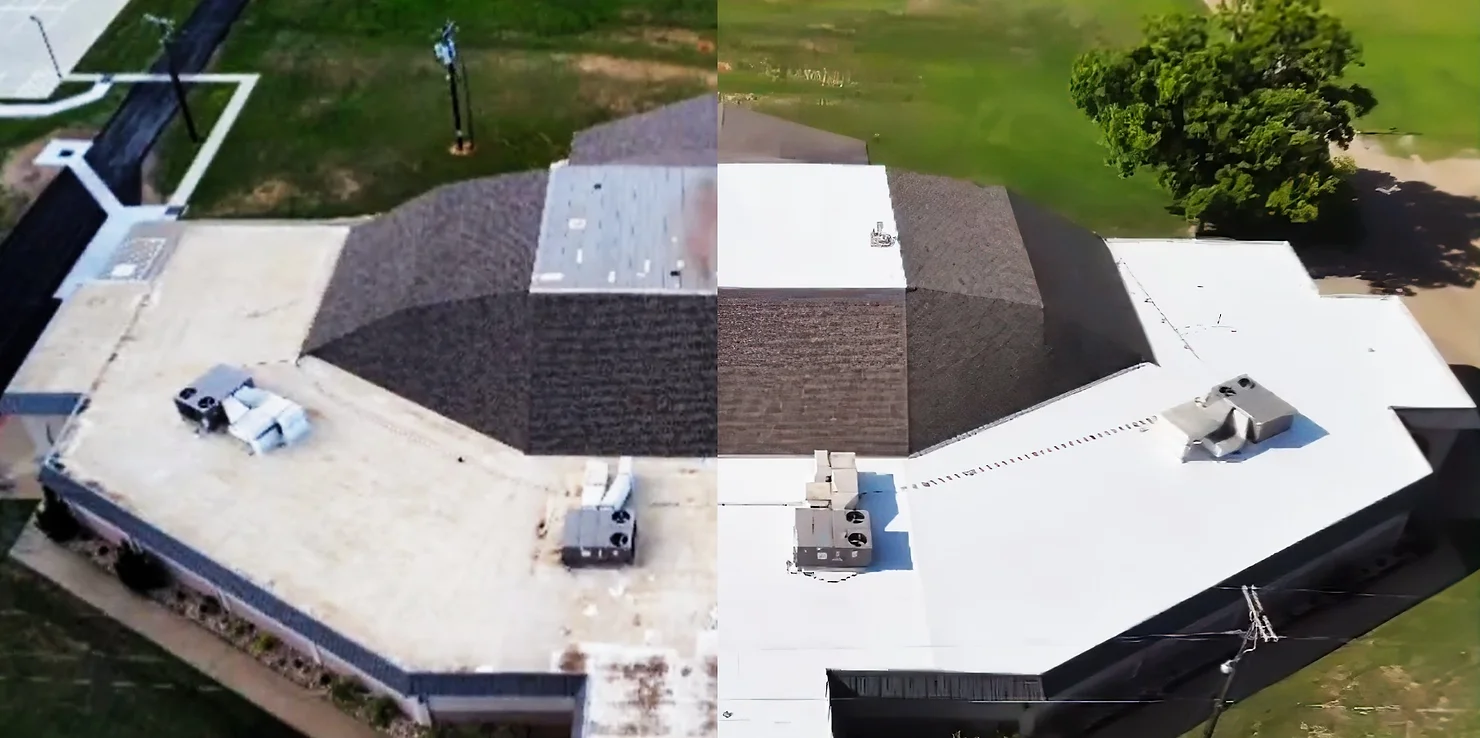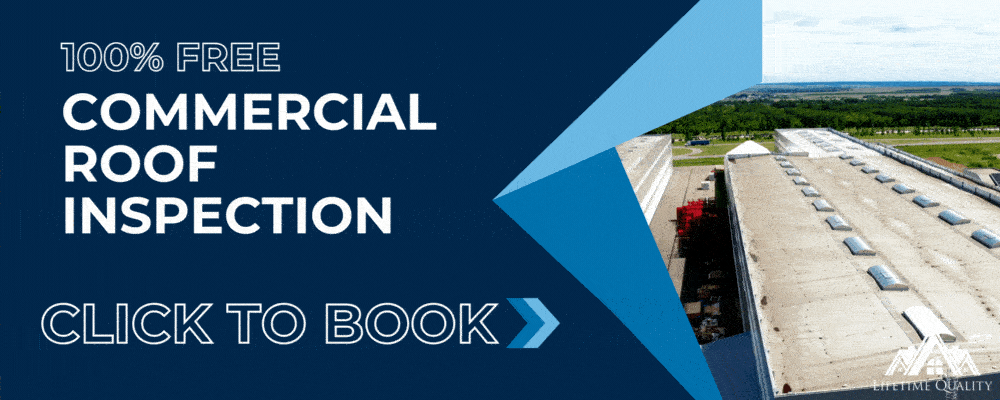
Beautiful Roofs From Around the World to Inspire You
Discover stunning roofs from around the globe that will inspire your next roofing project. Get ideas, tips, and inspiration for …

Are you the owner of a commercial property with a flat roof? If so, you know how important it is to keep that roof in top-notch condition. A well-maintained flat roof not only protects your investment but also ensures the safety and satisfaction of your tenants or customers. But where do you begin when it comes to commercial roof maintenance?
In this article, we will guide you through the essential steps needed to maintain your commercial property's flat roof. From regular inspections to proactive repairs, we will cover everything you need to know to keep your roof in excellent shape.
By following our expert tips and advice, you can avoid costly repairs and potential damage caused by leaks, pooling water, or excessive heat. We will also provide insights into the potential warning signs to look out for, so you can address any issues before they become major problems.
Keep reading to discover how you can maintain a flat roof on your commercial property and ensure its long-lasting durability and functionality. Your investment and the satisfaction of your tenants or customers depend on it!
Maintaining a flat roof on your commercial property is crucial for several reasons. First and foremost, a well-maintained roof protects your investment. The cost of replacing an entire roof can be substantial, so it's essential to take proactive measures to extend its lifespan.
Additionally, a well-maintained roof ensures the safety and satisfaction of your tenants or customers. A leaking roof can cause water damage to the interior of the property, leading to costly repairs and potential health hazards. By addressing issues promptly, you can avoid inconvenience and maintain a comfortable environment for everyone.
Regular roof maintenance also helps to preserve the energy efficiency of your property. A flat roof that is in good condition acts as an insulator, preventing heat from escaping in the winter and cool air from seeping out in the summer. This can result in significant energy savings and lower utility bills.
To summarize, roof maintenance is essential for protecting your investment, ensuring the safety and satisfaction of occupants, and maintaining energy efficiency. Now let's explore some common issues that can arise with flat roofs.
Flat roofs, while cost-effective and versatile, are prone to specific problems that need to be addressed promptly. Understanding these common issues will help you identify potential problems and take appropriate action.
One of the most common issues with flat roofs is ponding water. Due to their low slope, flat roofs can accumulate water after heavy rainfall or snowmelt. If the water doesn't drain properly, it can lead to structural damage, leaks, and mold growth. Regular inspections and proper drainage maintenance are essential to prevent ponding water.
Another common issue is roof leaks. Flat roofs are more susceptible to leaks due to their design and lack of slope. Over time, the roofing materials can deteriorate, leading to cracks, gaps, or holes. These issues allow water to penetrate the roof, causing damage to the underlying structure. Prompt repairs are necessary to prevent further damage and costly repairs.
In addition to ponding water and leaks, flat roofs are also prone to membrane shrinkage and blistering. Membrane shrinkage occurs when the roofing material contracts, leading to stress on the roof's structure. Blistering, on the other hand, is caused by trapped moisture within the roofing system, resulting in bubbles or raised areas. Both issues can compromise the integrity of the roof and require professional attention.
Now that we have covered some common issues, let's discuss how to identify signs of roof damage and when to take action.
Regular inspections are essential for identifying signs of roof damage and taking prompt action. Here are some warning signs to look out for:
When you identify any of these warning signs, it's crucial to take action immediately. Ignoring roof damage can lead to more extensive problems and costly repairs down the line. Now let's delve into the steps involved in maintaining a flat roof.
Proper maintenance is key to extending the lifespan of your flat roof and preventing major issues. Here are some essential steps to follow:
Regular inspections are the first line of defense when it comes to maintaining a flat roof. Inspect your roof at least twice a year, ideally in the spring and fall, and after severe weather events. During the inspection, look for signs of damage, such as cracks, blisters, or loose materials.
In addition to regular inspections, there are several maintenance tasks you should perform to keep your roof in good condition. These tasks include:
By incorporating these regular inspections and maintenance tasks into your routine, you can identify and address issues before they escalate. However, there may be times when repairs or patching is necessary.

When it comes to repairing a flat roof, it's essential to address issues promptly to prevent further damage. Here are some steps to follow:
Remember that proper repairs require skill and expertise. If you are unsure about tackling commerical roof maintenance yourself, it's always best to consult a professional to avoid causing further damage.
In addition to regular inspections and repairs, there are several preventative measures you can take to extend the lifespan of your flat roof:
By implementing these preventative measures, you can proactively protect your flat roof from damage and extend its lifespan. However, it's essential to recognize when it's time to seek professional roof maintenance services.
While regular inspections and minor repairs can be performed by property owners, there are times when professional roof maintenance services are necessary. Professional roofers have the expertise, experience, and tools to identify and address issues that may not be visible to the untrained eye.
When hiring a professional roof maintenance service, consider the following:
By hiring a professional roof maintenance service, you can have peace of mind knowing that your flat roof is in expert hands. Their services can help identify and address potential problems before they escalate, saving you time, money, and stress.
Maintaining a flat roof on your commercial property is essential for protecting your investment, ensuring the safety and satisfaction of occupants, and maintaining energy efficiency. By understanding the common issues with flat roofs, identifying signs of damage, and taking prompt action, you can avoid costly repairs and potential damage.
Regular inspections, clearing debris, keeping drains clear, repairing and patching, and implementing preventative measures are all crucial steps in maintaining a flat roof. However, there may be times when professional roof maintenance services are necessary to address more complex issues.
Remember, a well-maintained flat roof not only extends its lifespan but also ensures the long-lasting durability and functionality of your commercial property. By following the tips and advice provided in this article, you can take proactive steps to keep your flat roof in excellent shape and protect your investment for years to come.
Contact Lifetime Quality today to book your 100% commercial roof inspection.